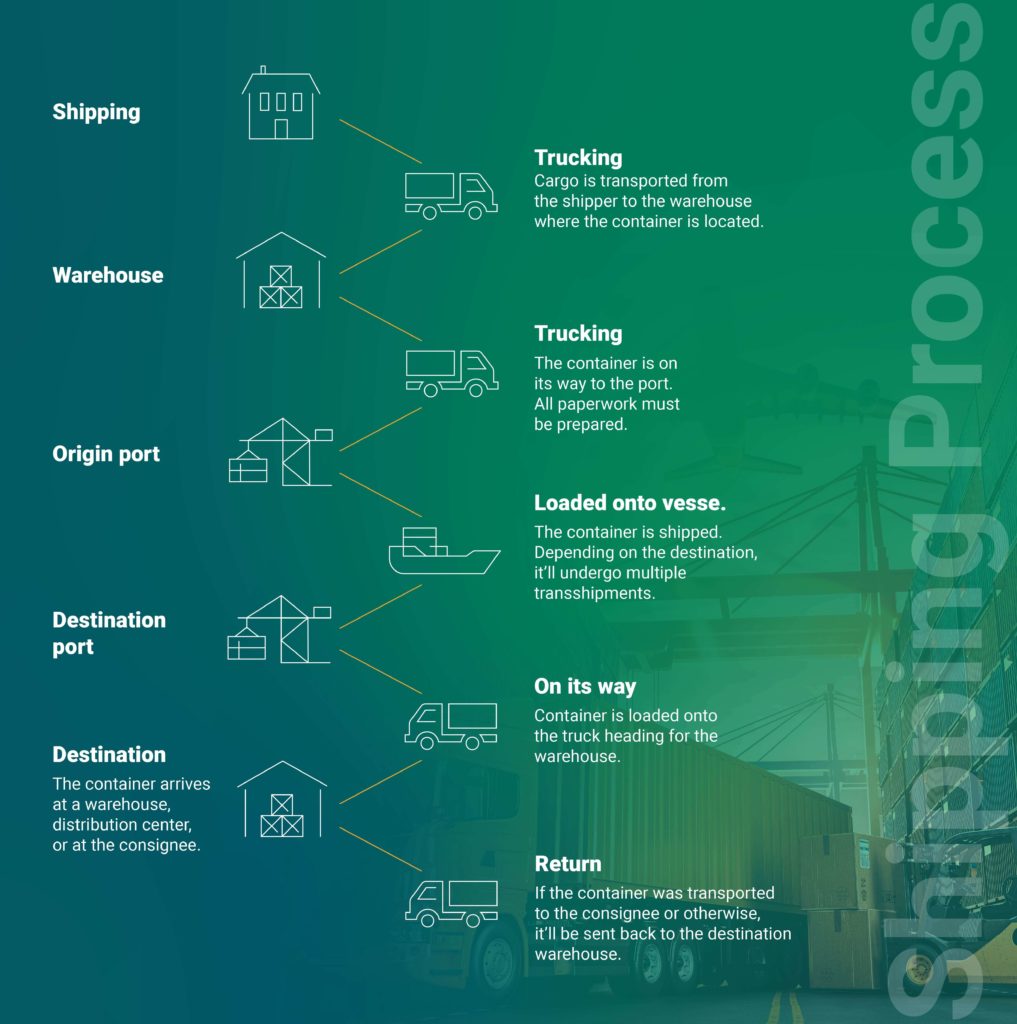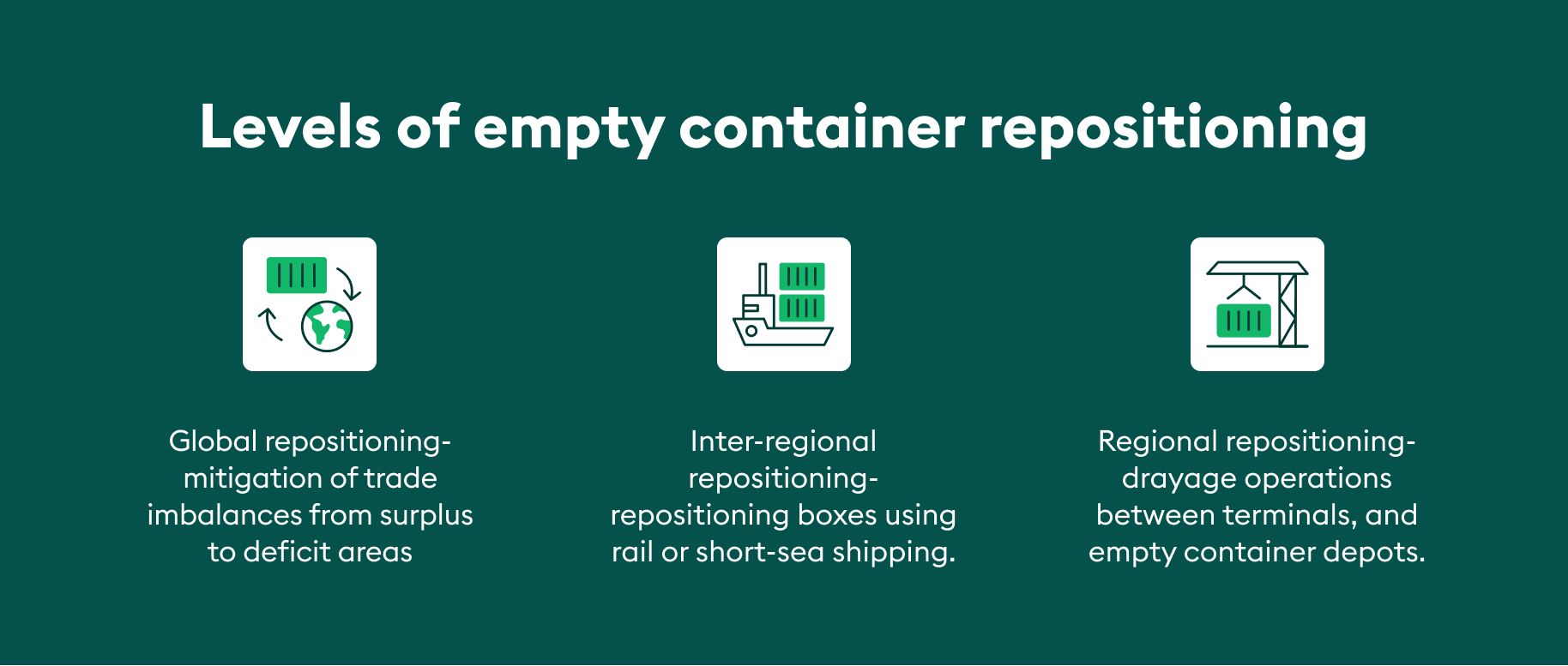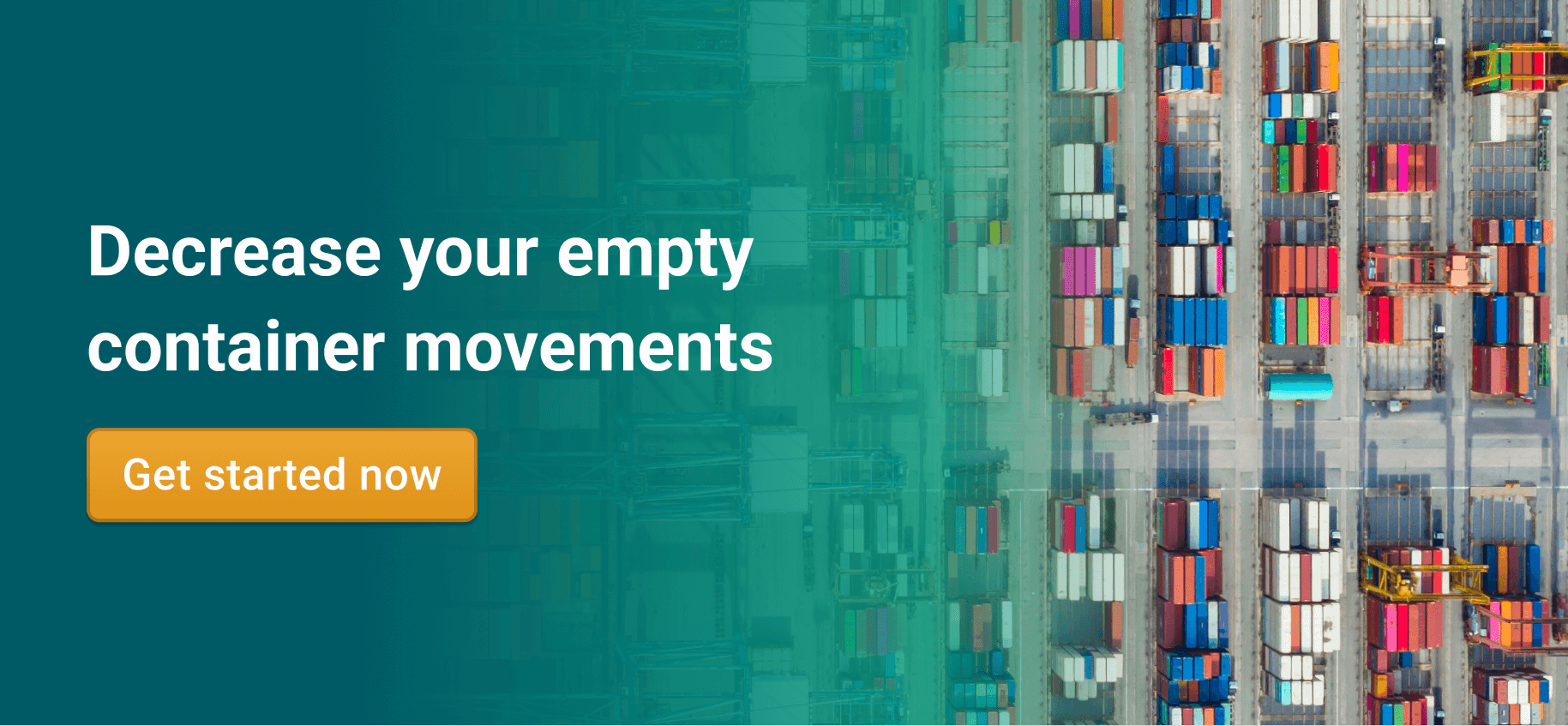Empty container transport is an expensive industry-wide challenge. And it increases your company’s carbon footprint too. Hence, our blog is here to help you with ways in which you can save costs and reduce your empty container transportation.
There are millions of containers making trips all around the world every year. But so many shipments spell trouble at times when empty containers are left sitting at the port for many days or even months collecting expensive surcharges.
This happens when there is a surplus of containers in one place and a deficit in the other. This is because of an import and export imbalance (i.e., one place has more exports than imports and vice-versa).
To have these empty containers repositioned takes up a lot of money. But we have a solution for you that can help save on these unnecessary expenditures. With us, you can connect with container users who’d move your containers one way (from a surplus to a deficit location) for free without the hassle of lengthy contract negotiations. Don’t believe us? Well, see this for yourself!
Try our public search below to find 1,500+ vetted users for free empty container transport. All you have to do is choose “I want to supply containers” and fill out where you have containers and want them dropped off. You’ll then get a list of vetted container users in your desired locations who are ready to use your boxes on that stretch instantly. Try it out!
What is empty container transport?
As mentioned above, empty container transport refers to moving empty containers from an area with a surplus of containers to a location with a deficit. Another term that is commonly used is empty container repositioning.
Let’s understand this with an example,
A shoe company is exporting canvas shoes from the Port of Hamburg in Germany to the Port of Mundra in India. Once the goods arrive in India and the cargo is discharged. The company then realizes that there isn’t enough cargo to import to Germany. This is when these empty containers pile up at the ports waiting for the time when there will be enough goods to be shipped. What we see here is that imports exceed exports leading to a surplus of containers in the Port of Mundra. This means that the Port of Hamburg doesn’t have enough goods coming back — leading to a deficit of containers in the port.
While the containers sit idly at the port, they collect surcharges such as:
- Handling charges at terminals and port
- Port storage and maintenance at warehouses
- Inland transportation
- Seaborn repositioning
All these costs, plus the cost of moving the empties back to Germany make empty container transport an expensive affair. But you can easily avoid these surcharges by using one-way containers instead, i.e. moving the boxes one way from India back to Germany.
So, if you want to lease out a container one way right now hop onto our platform to find vetted users to move your box right away!

What causes empty container repositioning?
The main factors that cause empty container repositioning (aka empty container transport) are:
- Trade imbalances- The disparity in trade refers to the container flow imbalance which leads to the surplus and deficit of containers we discussed earlier.
- Structural imbalances- This covers the outdated technology used by the logistics industry. The lack of innovation means many shipping companies still use Excel to plan their container repositioning. Using complex Excel sheets disrupts effective planning as human errors during manual inputs sometimes lead to shipping more containers empty than they need to. Here’s where AI can help shipping lines plan empty container repositioning in the most efficient way. But many companies are still hesitant to make the switch.
- Time-specific imbalances- In this scenario, one region has very high demand. Hence, carriers have to ensure they have enough containers at these ports. To keep up with demand, carriers have to prioritize sending empty containers to these ports as fast as possible.
- Carrier-specific imbalances- Keeping in line with the carriers, in an ideal world carriers would help one another out with empty container transport. This would ensure that they’re being more efficient, saving more money, and also being environmentally friendly. But sadly due to intense competition between carriers, this is not the case in the industry.
If you want more information on empty container repositioning and why it happens, click right here.
And if you want to make a one-way move to avoid empty container transport, then try our xChange Insights feature. You’ll have access to actual one-way leasing rates in 180 locations globally. You can compare pick-up charges, free days, and per diems for different stretches as well and see their development for up to 2 years. Check out this feature for yourself and, try Insights for free.
3 levels of empty container repositioning
Apart from the causes, there are also 3 types of empty container repositioning that you should know about. Have a look at the image below to find out what they are.

You now know that you can save money on any type of empty container repositioning by leasing containers one way on our platform. But how much money would you truly be saving your company with one-way leasing? Take a look:
Every year the global fleet of shipping containers makes more than 200 million trips worldwide. But the fact is every third container being moved is empty. It’s no surprise then that every year empty container transport costs the industry more than $60 billion. A whopping cost that’s equivalent to over 12% of the operating costs for shipping lines – yikes!
But you needn’t worry about these stats because we’ve got your back, whether you’re a container supplier or user.
How Container xChange helps you save money on empty container transport
If you’re a container supplier, you can use our platform to lease your box for that one journey. This is without incurring the costs of empty container repositioning and other port charges. And once you have the cargo moved, you can sell the container again on our platform at a good price and help in repositioning them! If you’re a container user, you can find one-way containers easily on Container xChange and get your cargo moved to its desired location by paying the usual consignment charges.
With one-way leasing, the advantages you get apart from avoiding repositioning costs are:
- Lower insurance costs
- Decreased risk of accidents
- Lessens your chances of cargo being robbed or stolen
If you’re an owner, you can find a certified user to move your box for you one way. You can automatically update your one-way offers and ease your manual load and find new partners. If you see a company you like, you can send them a message and negotiate terms like free days and per diem. All are based on the industry standard contract (BIMCO) you’ve all filled out beforehand — making your negotiations smoother and your work faster.
If you’re a container user, you can connect with 1,500+ vetted members who are ready to lease their containers one way! Negotiate great deals that suit your budget at your fingertips. And source your box from our list of 50,000+ boxes in 2,500 locations worldwide. You get the most competitive market prices with zero hidden fees.
Are you ready to save hundreds of dollars in repositioning your empties? Then get on the one-way leasing adventure today! And see how much you can save up every month on container surcharges. Click the banner below to get started.
Find top routes with best prices for empty container transport on Container xChange
With your one-way move secured, now begs the question of finding the best time, prices, and routes to reposition these empty containers. xChange can help with that too! We constantly study the market and identify the most liquid locations to reposition both empties as well different types of containers. We also report on congestion at the global ports, workers’ strikes, new shipping routes, overcapacity/shortage of containers, container prices, and container availability at ports (CAx).
Here are some stats from our report:
- China to Canada, the US, and the UAE were the most popular routes in June for 40ft standard containers.
- Trade ties between India and Russia have strengthened over a year. The container traffic between the two countries has been growing and is forecast to grow further this year.
- Sagging consumer demand and economic activity in Europe could lead to lower imports. Affecting export-dependent economies and leaving them vulnerable to potential trade disruptions.
- The Panama Canal trade route is a critical gateway for shippers to move cargo to the Gulf and East Coast ports. But due to the drought, there’s been a drop in cargo-carrying capacity. This is a concern for shippers. As it will be costlier for them to move cargo on this route now under these circumstances.
For a further roundup of regions that have the best profit options; to know how to reposition containers; and to read our forecasts for the months ahead, you can click on the banner to download a free copy of our global logistics report Where are all the containers?
Empty container transport management made easy with Container xChange
Circling back to the Germany-India example, earlier in the blog. Let’s say you have 100 containers stuck in India. Now, a container user is interested in using your boxes to ship cargo to Germany. The user leases your containers in India one way for their cargo to be shipped from India back to Germany. You get your containers moved for free without having to deal with the administrative hassle of figuring out slots on the vessel, trucking, and so on. And they get their cargo moved too.
With us, you can scroll through container users interested in moving your containers for you. All the users are already vetted, so you know they’re trustworthy. On one hand, the users can reach out to you directly if they’re interested in your offer. While you, on the other hand, can see peer reviews from former partners – and see whom they’ve worked with so far. This increases trust and partnership in the long run.
One of our partner companies, Neptune Global Logistics, needed to find reliable partners who would like to use their empty containers. xChange helped them solve this issue and here’s what they had to say,” We discovered Change in 2019 and immediately became a leasing member. Since joining, we’ve made 39+ reliable partners overseas and have successfully repositioned 1000s of our empty containers. And, we’ve simplified our container operations while doing so! No more back-and-forth emails and cold calling.” Zarina Wang, Container Operation Department, Neptune Global Logistics
As you can see, our online neutral platform makes it easy for container owners and users to find trustworthy one-way partners to curb repositioning. So go on and click our banner below to let our team give you a hand with your empty container transport today.
Empty container transport: Common FAQS
What is empty container shipping?
The empty shipping containers are loaded with a new batch of cargo and shipped from the port to their new destination. They are shipped to their new destination sans cargo due to empty shipping repositioning. Or, they get piled up at depots and ports.
What is empty container repositioning?
Empty container repositioning refers to moving empty containers from an area with a surplus of containers to a location with a deficit. For container owners, empty container repositioning has a substantial economic downside. Every year, moving empty containers costs the industry more than $20bn.
What are empty containers?
An empty container is exactly what it sounds like. Empty containers are shipped when they’re in places that have a surplus of containers. You as a container owner can also decide to move your empty containers, simply if there’s a lack of network at the location.
Where are empty containers stored?
A depot serves as a temporary storage facility for shipping containers until it's time for reloading cargo.





